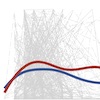 Temporal airway microbiome changes related to ventilator associated pneumonia in children
Temporal airway microbiome changes related to ventilator associated pneumonia in childrenMourani PM, Sontag MK, Williamson KM, Harris JK, Reeder R, Locandro C, Carpenter TC, Maddux AB, Ziegler K, Simões EAF, Osborne CM, Ambroggio L, Leroue MK, Robertson CE, Langelier C, DeRisi JL, Kamm J, Hall MW, Zuppa AF, Carcillo J, Meert K, Sapru A, Pollack MM, McQuillen P, Notterman DA, Dean JM, Wagner BD; Eunice Kennedy Shriver National Institute of Child Health and Human Development Collaborative Pediatric Critical Care Research Network (CPCCRN)
European Respiratory Journal, 2020Abstract: We sought to determine whether temporal changes in the lower airway microbiome are associated with ventilator-associated pneumonia (VAP) in children.Using a multicenter prospective study of children 31 days to 18 years requiring mechanical ventilation (MV) support for >72 h, daily tracheal aspirates were collected and analysed by sequencing of the 16S rRNA gene. VAP was assessed using 2008 CDC pediatric criteria. The association between microbial factors and VAP was evaluated using joint longitudinal time-to-event modelling, matched case-control comparisons, and unsupervised clustering.Of 366 eligible subjects, 66 (15%) developed VAP at a median of 5 (IQR: 3-5) days post intubation. At intubation, there was no difference in total bacterial load (TBL), but Shannon diversity and the relative abundance of Streptococcus, Lactobacillales, and Prevotella were lower for VAP subjects versus non-VAP subjects. However, higher TBL on each sequential day was associated with a lower hazard (HR: 0.39; CI: 0.23, 0.64) for developing VAP, but sequential values of diversity were not associated with VAP. Similar findings were observed from the matched analysis and unsupervised clustering. The most common dominant VAP pathogens included Prevotella species (19%), Pseudomonas aeruginosa (14%), and Streptococcus mitis/pneumoniae (10%). Mycoplasma and Ureaplasma were also identified as dominant organisms in several subjects.In mechanically ventilated children, changes over time in microbial factors were marginally associated with VAP risk, although these changes were not suitable for predicting VAP in individual patients. These findings suggest that focusing exclusively on pathogen burden may not adequately inform VAP diagnosis.
